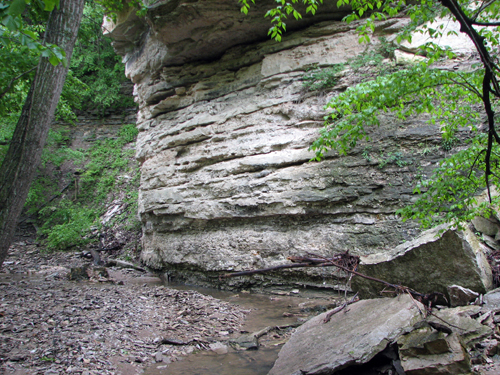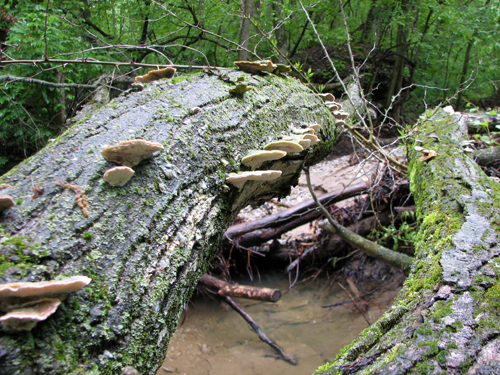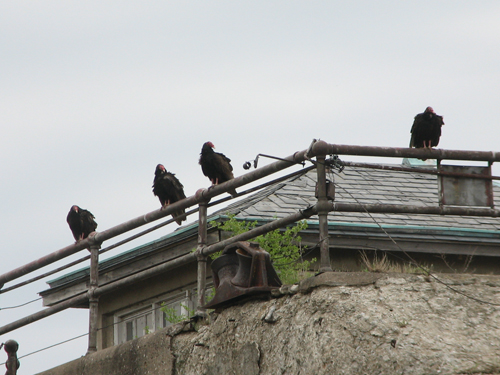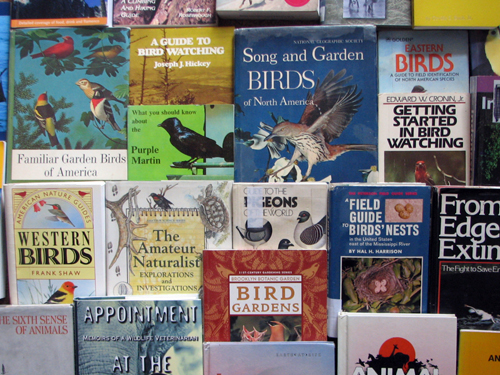Into the ravine
Following our morning Mississippi River boat trip, our second excursion during the Illinois Audubon Spring Gathering was at Cedar Glen Natural Area. Participants met at the Kibbe Life Science Research Station and had a choice of two walks: a level hike around prairie meadow and forest, or a steep journey down into a ravine. We decided to hike down into the ravine.
We headed into the forest on the Bluff trail, and were soon looking down into the ravine.


The last part of the downward hike required us to scramble down a very steep slope, using a rope to steady ourselves. The recent rains made the trail very wet, muddy and slippery, so the rope was a must. It was a lot of fun.

Again, unfortunately, the walk was not too birdy, but the views were outstanding. It may have been raining, but we hardly noticed, walking under the leafed-out trees.
We meandered along the creek bed, crossing the water and walking along the rocks. We were accompanied by a caretaker’s dog, who provided comic relief a few times. He was also mistaken for a deer countless times as he walked far ahead of the group. “There’s a deer! Oh… wait, no. It’s the dog. Again.”


We looked for fossils among the creek bed rocks. There weren’t a lot of birds, but there was plenty to look at, plenty of life to see.





In the end, after we climbed back up the slope and were heading back to our cars, we picked up a few great birds, including a cooperative Common Yellowthroat and a loudly calling Eastern Towhee.

Next: Sunday morning at Stony Hills.

































